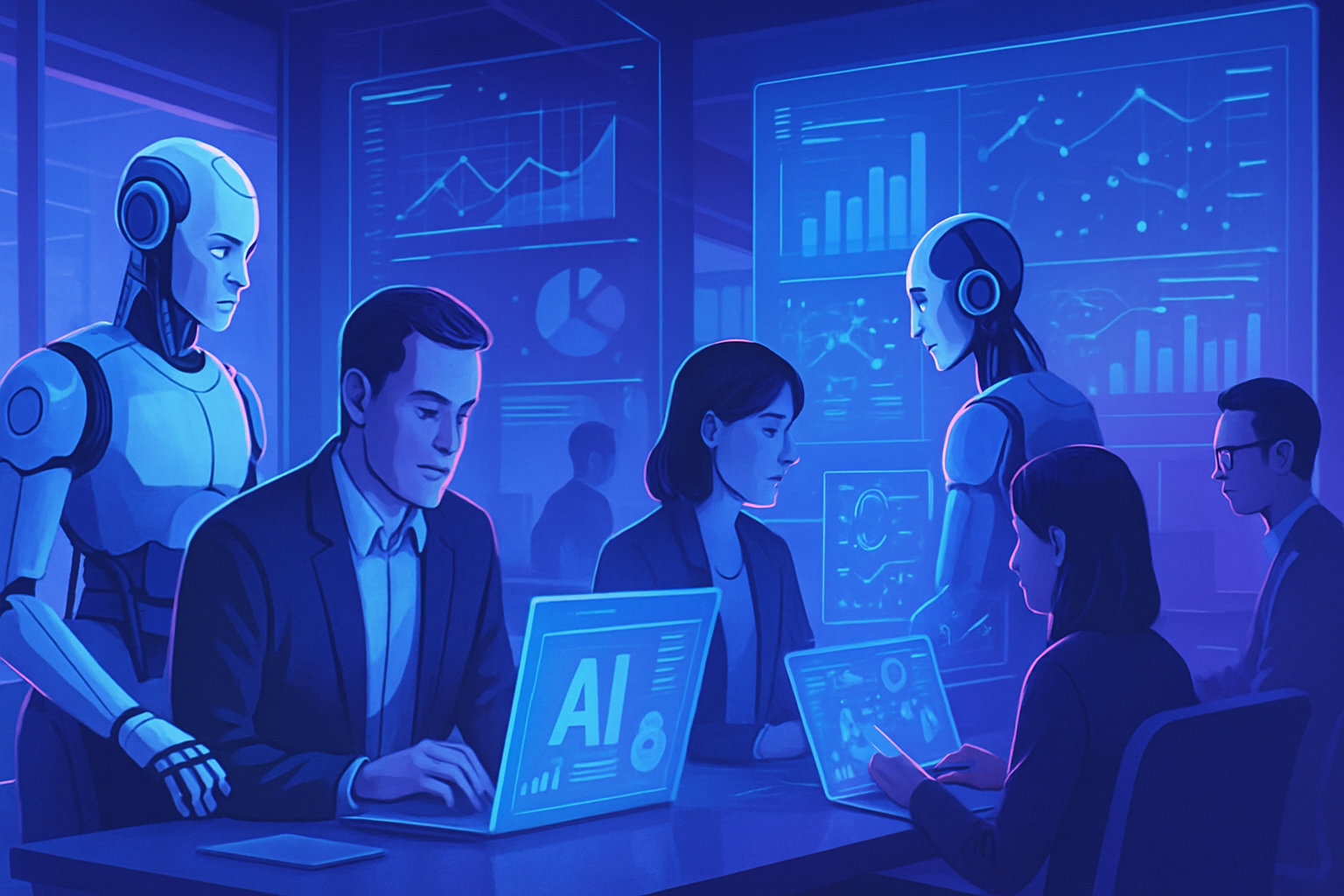The rapid rise of neuromorphic materials is revolutionizing the paradigms of computation in artificial intelligence. These innovative devices promise to combine performance and energy sustainability, thereby alleviating environmental concerns related to AI. Developed with ultra-low power consumption technologies, these systems mimic the neural mechanisms of the brain, opening up unexpected perspectives. Escaping the limitations of traditional architectures has become an imperative in today’s technological landscape. The quest for an eco-efficient equivalent, vital for the future, resonates with the promising advancements of these advanced materials.
Advancements in the field of neuromorphic computing
Researchers at Seoul National University have developed a neuromorphic material capable of performing artificial intelligence (AI) computations with ultra-low energy consumption. This study, published in the journal Nature Nanotechnology, highlights the fundamental challenges posed by current smart semiconductor materials and devices while demonstrating significant potential for network-scale technologies.
The challenges of traditional computing
The high energy consumption in parallel computing remains a major obstacle for processing large data in various sectors, such as the Internet of Things (IoT) and generative language models. The traditional architecture of silicon-based semiconductors, notably CMOS, presents disadvantages such as reduced memory and processor speeds, as well as physical limits in high-density processes. These weaknesses create challenges regarding energy and carbon emissions, despite the positive contributions of AI in daily life.
Towards neuromorphic computing: a new era
The need to overcome the constraints of Von Neumann model-based architectures is becoming urgent. Thus, the design of next-generation smart semiconductor materials that mimic the operational principles of the human brain is strategically important. The human brain, composed of approximately 100 billion neurons and 100 trillion synaptic connections, processes and stores information through synaptic weights, acting as the basic units of this intelligence.
Innovation in materials: perovskites
Dr. Seung Ju Kim and Professor Ho Won Jang have examined the high ionic mobility of halogenated perovskite materials. These materials, which are gaining increasing interest as materials for next-generation solar cells and light-emitting diodes, have led to the creation of innovative neuromorphic devices based on hybrid organic-inorganic materials. The new two-dimensional perovskites allow for uniform ion distribution across the surface of the semiconductor.
Improved performance and accuracy
This technical breakthrough has enabled linear and symmetrical control of synaptic weights, an unprecedented achievement with conventional smart semiconductors. The theoretical principles of this method have been validated by fundamental calculations conducted by a team from POSTECH University. The researchers noted that the developed device achieves remarkable accuracy during AI computations, not only with small datasets like MNIST and CIFAR but also with large datasets such as ImageNET, displaying an error margin below 0.08%.
Energy efficiency: a revolution underway
Collaborative research with the University of Southern California has demonstrated that AI computations can be executed with ultra-low energy consumption, both at the device level and network scale. This advancement significantly enhances the energy efficiency of smart semiconductor materials and devices. The implications are vast, particularly in areas such as autonomous driving and medical diagnostics.
Impact on the semiconductor industry
This technology, which represents an improved version of previous research published by Dr. Kim and Prof. Jang, is generating heightened interest in the semiconductor industry. Currently, patent applications are under review in South Korea and the United States. Prof. Jang noted that “this research provides essential fundamental data to solve the core challenges of next-generation smart semiconductor devices.” The need to mobilize ions uniformly across the surface of the material takes precedence over creating localized filaments within semiconductor materials.
The research conducted promises many advancements in the field of eco-efficient AIs. Future developments should transform the advanced technology industry.
This study could lead to unprecedented energy efficiency for AI.
Frequently Asked Questions
What is neuromorphic hardware?
Neuromorphic hardware is a technology that mimics the functioning of the human brain to perform computations. It is designed to process information similarly to neurons and synapses, enabling fast and efficient thinking with reduced energy consumption.
How does ultra-low power neuromorphic hardware differ from traditional technologies?
Unlike traditional technologies based on CMOS semiconductors, ultra-low power neuromorphic hardware uses brain-inspired architectures, allowing for significantly lower energy consumption while providing superior parallel processing potential.
What are the ecological benefits of neuromorphic hardware?
Neuromorphic hardware enables eco-efficient computing by reducing energy consumption and carbon emissions. By using less energy to perform complex calculations, it contributes to more sustainable environmental solutions.
In which areas is neuromorphic hardware most promising?
Neuromorphic hardware has applications in various fields, including autonomous driving, medical diagnostics, the Internet of Things (IoT), and artificial intelligence, where it can improve performance while reducing energy consumption.
What impact does neuromorphic hardware have on AI computation accuracy?
Neuromorphic hardware can enhance AI computation accuracy through ultra-linear and symmetrical synaptic control, allowing for more precise adjustments of synapse weights, resulting in very low error rates during inference on large datasets.
Can neuromorphic technologies reduce energy costs in data centers?
Yes, the adoption of neuromorphic technologies could significantly reduce energy costs in data centers by enabling faster and more efficient computations, thereby optimizing energy usage.
What challenges must neuromorphic hardware development overcome?
Challenges include miniaturizing components, integrating them with existing systems, while ensuring reliability and performance. Other challenges concern finding new materials that can optimize the operation of neuromorphic hardware.






